Our bird nest fern started yellowing on leaves after roommate treated it for mites a plant next
Problem: Poor Growth, Root Rot. Although Bird's Nest Fern needs moist soil soggy, waterlogged soil promotes root rot. It can handle an occasional dry period, so if the roots have an odor or look brown and mushy, stop watering for a few days. When you resume, water every other day. Make sure the container drains well.
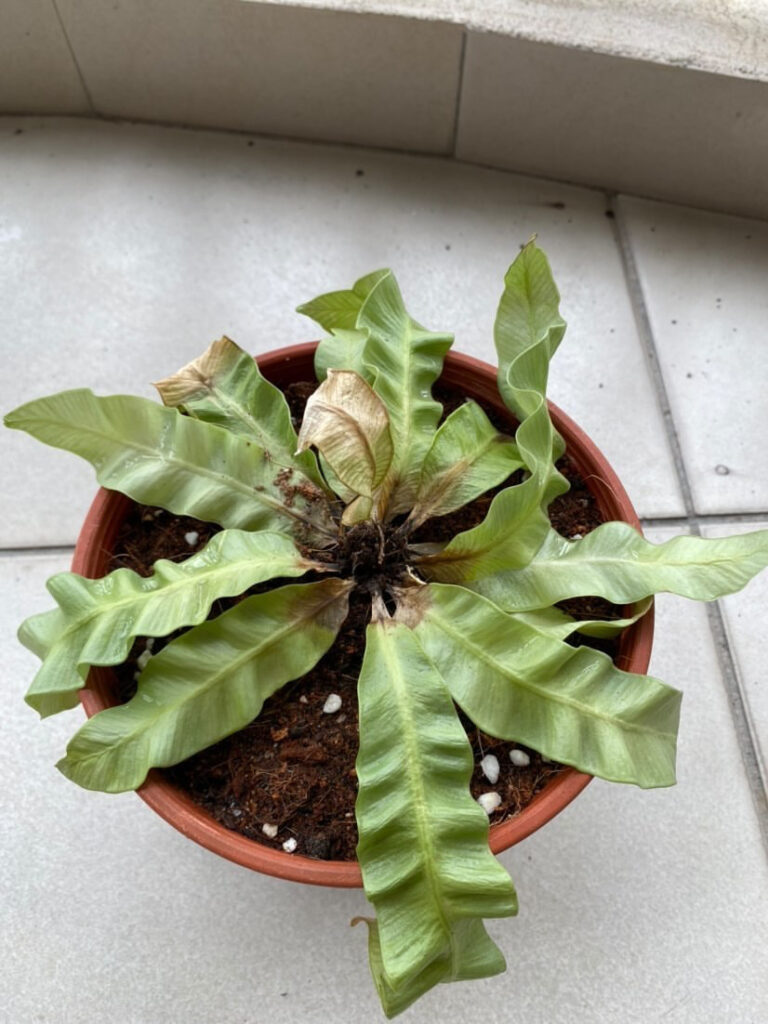
Why is my Bird's Nest Fern Turning Black Common Problems with Bird's Nest Fern SuburbanSill
When most people think of ferns, they think of feathery, airy fronds, but not all ferns actually look like this.The bird's nest fern is an example of a fern that defies our preconceived ideas of what a fern should look like. Even better is the fact that a bird's nest fern plant makes an excellent low light houseplant.

Garden Pests and Diseases Birds' Nest fern needs help, please!, 1 by tucsonjill
Solution: You might have a rotten nest. It is very important that when you water you keep the middle of the Bird's Nest Fern dry and free from debris. It needs to stay clean in order for the new leaves to unfurl. If you look in the center and it is black or rotten, it might be too late. If you see some green leaves pocking through, gently.

Common Bird's Nest Fern Pests and Diseases (and How to Deal With Them) Petal Republic
In the wild, the Asplenium nidus bird's nest ferns grow in eastern tropical Africa, northern Australia, and tropical Asia. While Asplenium nidus can be either epiphytic or terrestrial, it's fond of rich organic matter. Asplenium nidus often can be found living in bromeliads or on palm trees in its natural environment.

10 Birds Nest Fern Problems and How to Fix Them! Gardenia Organic
The gorgeous Bird's Nest Fern, whose name comes from the nest-like center of the plant, is not your typical fern. Hardier than most of its kind, the Bird's Nest Fern boasts thick, waxy leaves that slowly unfurl to create a beautiful and unique accent on a table, shelf, or bedroom dresser.

Birds Nest Fern got Scale 😭 Care Tips YouTube
Prune dead or damaged fronds to encourage new growth. Propagate by division or frond cuttings for new plants. Keep an eye out for pests like mealybugs, scale, and mites. Following these tips will keep your bird's nest fern healthy and thriving. indoors. Pay close attention to lighting, humidity, watering, and using.
Bird's nest fern brown bumps on the leaves? GardeningIndoors
Brown tips in bird's nest fern are the result of improper watering, use of poor quality water, too much fertilizer, low humidity, temperature stress, exposure to direct light, or the lack of it. Root rot, repotting shock can also lead to the same problem. There are some other causes that can cause this issue.

Why your Bird's Nest Fern leaves are turning brown. YouTube
Botanical Name: Asplenium nidus Common Name: Bird's nest fern, nest fern Family: Aspleniaceae Plant Type: Perennial, epiphyte (can also be grown as a houseplant) Hardiness Zones: 10-12 (USDA) Sun Exposure: Indirect light to moderate shade Soil Type: Well-draining, rich, and humusy soil Soil pH: Neutral to slightly acidic Maturity: 2-5 years (when grown as a houseplant)
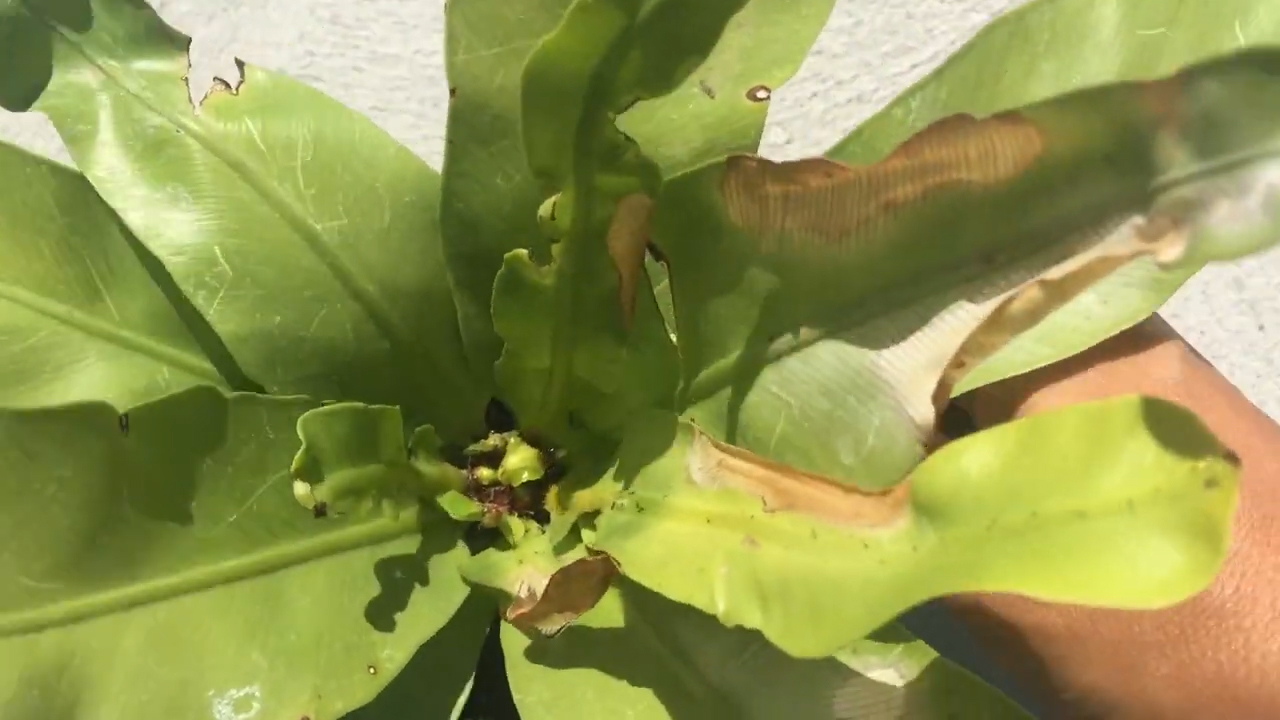
Why is my Bird's Nest Fern Turning Black Common Problems with Bird's Nest Fern SuburbanSill
Bird's Nest Fern Care. Place your bird's nest fern in a location with medium to bright indirect light or partial shade. Plant your bird's nest fern in a peat-based potting mix with good drainage. Water your plant so the soil is evenly moist but not soggy.
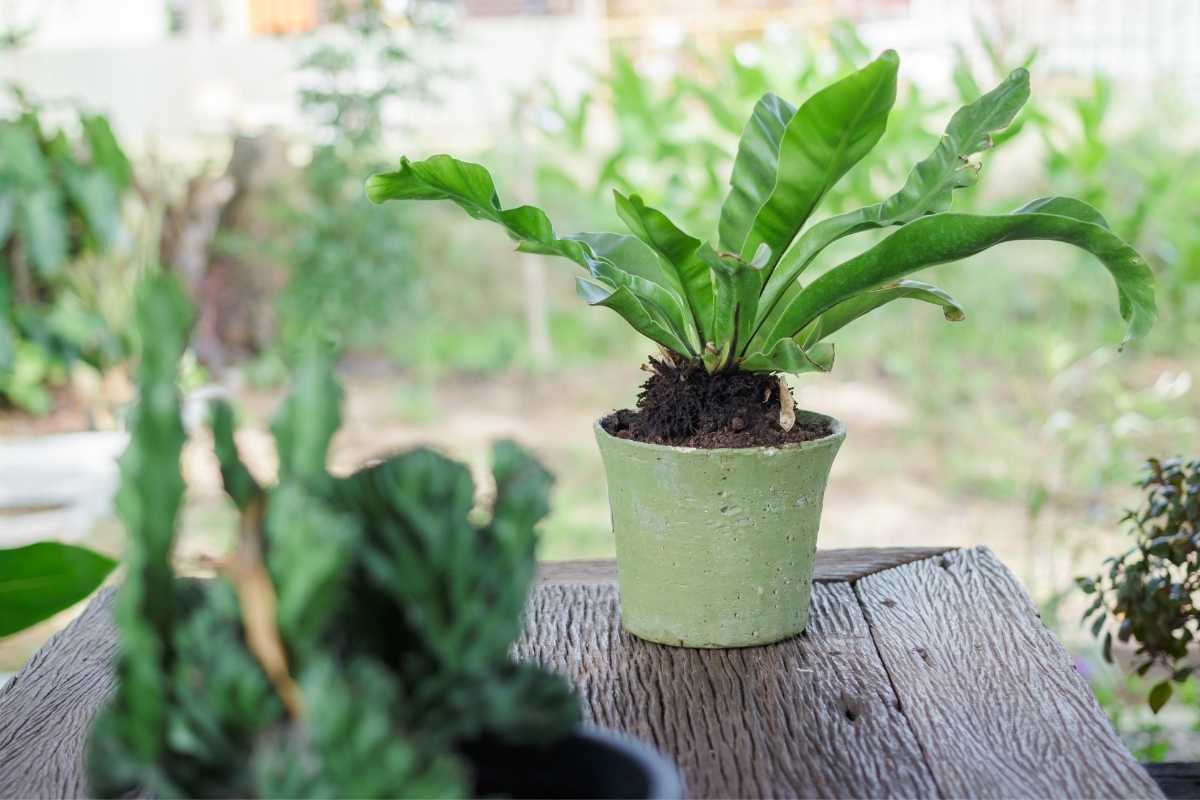
10 Birds Nest Fern Problems and How to Fix Them! Gardenia Organic
Bird's nest ferns are epiphytic, meaning they grow on the surface of other plants. They can be found growing high in the crooks of the trees in their rainforest homes. They form a series of bright green fronds that rise from a central rosette. The fronds of bird's nest ferns are only 2 feet long, which is not long for a healthy plant.

Why your Bird's Nest fern leaves are deformed. YouTube
From April - September feed the plant with a weak diluted fertilizer every 2 weeks to encourage new growth and healthy looking leaves. The Asplenium nidus does not need a pot change very often because it's roots are very small. Once every 2 years is advised for a mature species and once a year while it's young.

The bird’snest fern leaves inoculated with different F 1 lines. (A)... Download Scientific
For a mild case, stop watering and let the soil dry out. Reducing humidity and taking your plant to a warmer spot can help expedite the process, though. If root rot has occurred, you must repot your bird's nest fern. Step one is to remove your bird's nest from its pot. Rinse off as much soil from the roots as possible.

Common Bird’s Nest Fern Pests and Diseases Story Petal Republic
Common indoor bird's nest fern pests include scale, spider mites, foliar nematodes, shore flies, fungus gnats, and mealybugs. Most can be treated with horticultural oils, such as neem oil or insecticidal soap. Bird's nest ferns may also be susceptible to bacterial blight. Prevent blight by avoiding getting water on the foliage.
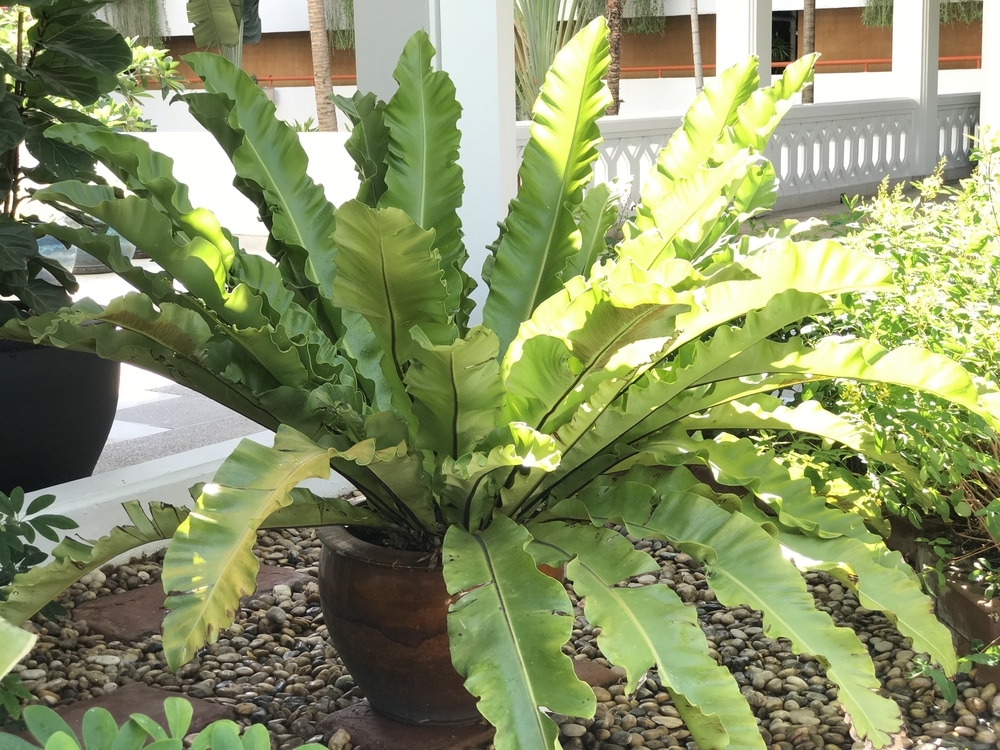
Bird Nest Fern Problems » Identification Tips & Control
Native to tropical Asia, bird's nest fern thrives in Florida's humid climate in zones 9 to 11; plants in zone 9 will need freeze protection. Plant it in an area with partial to full shade and rich soil. When grown in sunnier locations, the fronds turn yellow and the plant stops growing. Like many ferns, this plant is not drought-tolerant, so.
Bird's nest fern lower leaves turning yellow plantclinic
Whether your Bird's Nest Fern has dropping leaves or your Bird's Nest Fern has yellow leaves, let's dissect some of the common issues with a Bird's Nest Fern.

Why Is My Bird’s Nest Fern Dying? (Solved!) Garden For Indoor
Common Birds nest fern problems . For most owners caring for a bird's nest fern is a low-maintenance affair. With bright, indirect light, warmth, and a little humidity you should find it thrives. However, there are pests and diseases that can wreak havoc with your bird's nest fern and damage or even kill it.